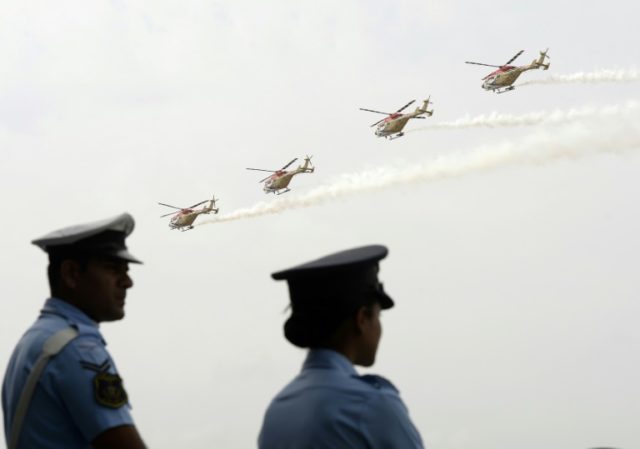India this week asked foreign companies to bid for a nearly $3 billion deal to manufacture 111 military helicopters on Indian soil in collaboration with domestic firms to replace the navy’s aging Soviet-era aircraft, the country’s defense ministry announced.
Citing the ministry on Tuesday, the day New Delhi announced the proposal, Reuters reported that U.S.-based companies Lockheed Martin and Bell Helicopters, as well as the France-based Airbus Helicopters, are among the aircraft manufacturers expected to participate in the bidding.
The news outlet noted:
India has been trying to modernize its military to narrow the gap with China but defense expenditure has been largely stagnant, making for slow procurement.
Under the elaborate rules of defense purchases, once manufacturers have submitted expressions of interest, the defense ministry will issue requests for proposals likely to be in the third quarter of 2019. That will be followed by a tender inviting final bids from the manufacturers in a process that is expected to take years.
Indian companies are expected to collaborate with local firms to make the helicopters as part of Prime Minister Narendra Modi’s Made-in-India program focused on building a domestic military industrial complex and reduce imports.
Echoing other assessments, the latest Global Firepower (GFP) index, which ranks 133 countries annually, listed the United States armed forces as the globe’s most powerful military, trailed by Russia, China, and India, respectively.
India and China are regional rivals. This month, the Wall Street Journal (WSJ) reported that New Delhi is falling behind Beijing in an Asian arms race, noting that PM Modi has a “habit of choosing butter over guns.”
WSJ pointed out:
Though the $60.9 billion earmarked for defense [in 2019] is the most ever in absolute terms—and an 8% increase over last year—defense outlays have dipped to a modest 2.1% of gross domestic product.
That decline is made worse because much of India’s military budget is consumed by salaries for its bloated 1.4-million-strong army, rather than for buying weapons and investing in new technologies. Inflation and a weakening rupee—India imports about two-thirds of its military hardware—crimp the budget further.
The newspaper argued that the United States, which has increased cooperation with India in efforts to curtail China’s expansionism, should be concerned by the long-term risks associated with New Delhi’s “tight military spending.”
“Each year India falls further behind China’s rapidly modernizing military,” it added.
On Tuesday, the top U.S. commander in the India-Pacific region warned that China’s “massive effort to grow and modernize” its military is even “eroding” America’s military advantage in the area.

COMMENTS
Please let us know if you're having issues with commenting.